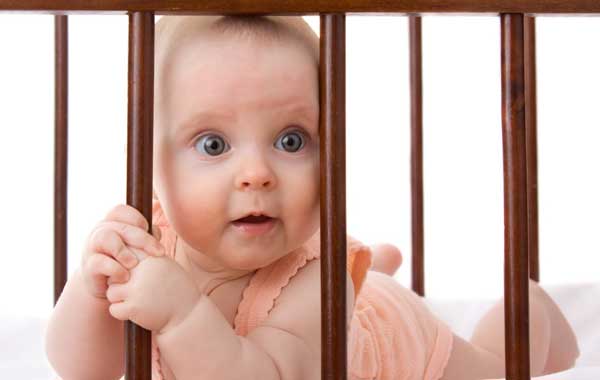Alarming Number of Crib Injuries Spurs Call for Improvements

More than 9,500 infants and toddlers are treated in emergency rooms each year for injuries related to cribs, bassinets and playpens, according to a new study.
Researchers at Nationwide Children's Hospital in Columbus, Ohio, pulled data from the National Electronic Injury Surveillance System, a nationwide database of emergency visits, and used it to estimate those injuries related to cribs, bassinets and playpens from 1990 to 2008. They found that among children under age 2, there was an average of just over 26 ER visits each day for reasons tied to those items. More than 83 percent of those injuries involved cribs. Two-thirds of the visits were the result of falls.
The results reveal a problem that calls for prompt action by crib manufacturers, public health officials and parents, said lead researcher Dr. Gary Smith, director of the Center for Injury Research and Policy at Nationwide Children's.
"We want parents to be able to put them in there and walk away with peace of mind," Smith told MyHealthNewsDaily.
The study, released online today, will appear in the next issue of the journal Pediatrics.
Deaths were relatively rare — just over 1 percent of emergency room visits had that result. While past studies have looked at deaths in cribs, "This is the first time someone has looked on a national level at fatal and nonfatal injuries," Smith said. "One of the things that surprised me was the nonfatal injuries."
Of those injuries, he said, "We know that's an underestimate, because some children will be treated in physician's offices." As a result, those cases would not have appeared in the database.
Sign up for the Live Science daily newsletter now
Get the world’s most fascinating discoveries delivered straight to your inbox.
The study has drawn praise from experts for drawing attention to an issue that will affect all children.
"Cribs are a place that every kid, at some point, gets put into," said Dr. Leigh Vinocur, a spokeswoman for the American College of Emergency Physicians and an ER physician at the University of Maryland School of Medicine. "It's not that every crib is going to fail that way, but there's potential that they can fail."
But there are steps parents can take to try to avoid falls, which increase as children get older and gain mobility.
"Kids can fall out of cribs whether the crib is faulty or not," Vinocur said.
Vinocur and Smith both noted that as children grow older and begin to stand, parents need to lower the mattress in the crib, so that the toddler cannot climb out.
Smith said that once a child can stand, there should be 26 inches between the top of the mattress and the top of the crib.
"When a child reaches about 35 inches in height, those are the kids that are old enough and tall enough, they really need to be transitioned to a toddler bed and taken out of the crib," he said.
In addition to not making the needed mattress adjustments, Vinocur said another possible problem with cribs could be that many parents purchase baby items, including cribs, secondhand. While that may be an economic necessity, these can be worn and ripe for problems.
"I think that that’s one of the bigger risks. Maybe cribs weren't made to last through 20 years," she said. "You should consider that before you buy one secondhand, and make sure that everything is moving and such."
Vinocur included checking that sliding parts are on track, and that pins are in place and not bent.
Smith added that its possible secondhand cribs or hand-me-downs were part of a recall, considering the number of cribs recalled in recent years. He recommended parents check http://www.recalls.gov/ before buying.
The Consumer Product Safety Commission released a statement saying that more would be done to enhance the safety of the product studied.
"Cribs, bassinets and play yards should be among the safest products in a home. CPSC has addressed and will continue to address the issues raised by the respected authors of this study and our actions have made children safer,” said Scott Wolfson, director of public affairs for the agency.
While his study showed that cribs may have a small risk, Smith urged that parents should not opt for a more dangerous alternative, such as putting infants in a bed with parents.
While thousands of children go to the ER each year for crib-related injuries, it works out to a rate of about 12.1 injuries per 10,000 toddlers per year.
"We still say and believe that cribs are the safest environment for children to sleep in. We know if infants are placed on their back, in their crib — we say a bare crib is the safest ... we still say that is the safest environment for children," he said.
"We need to do more, but in the meantime, parents, don't take this as a message that cribs aren't safe," he said. "We just need to work harder to make them even safer."
This article was provided by MyHealthNewsDaily, a sister site to LiveScience.










